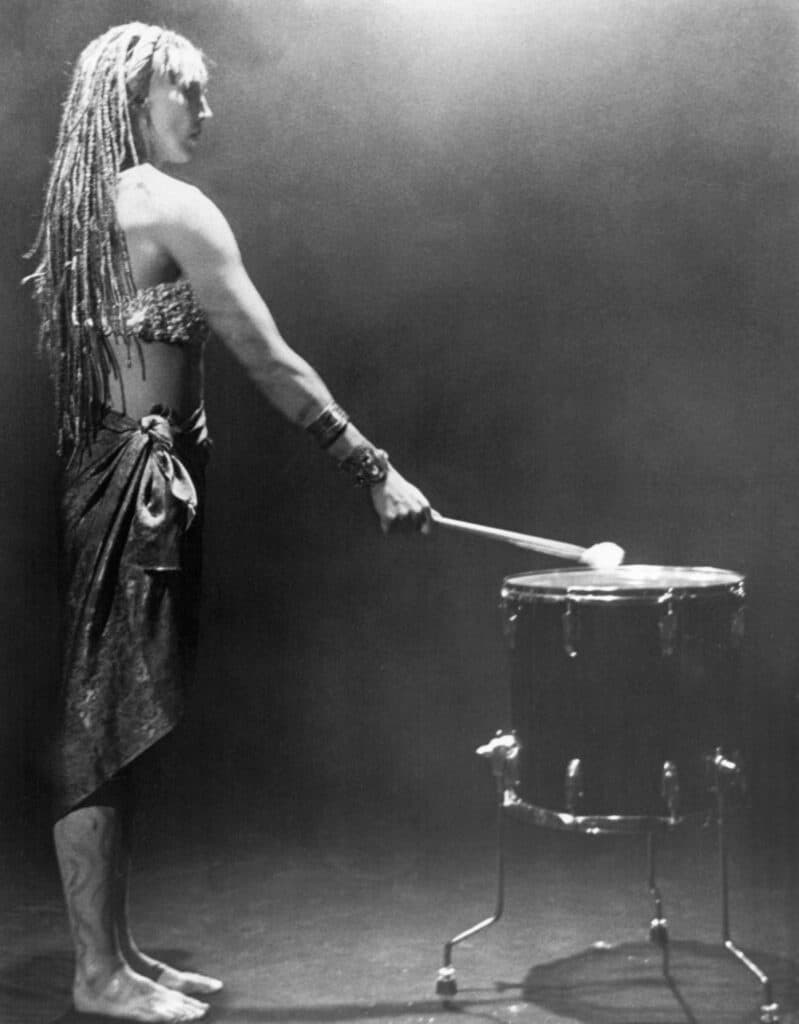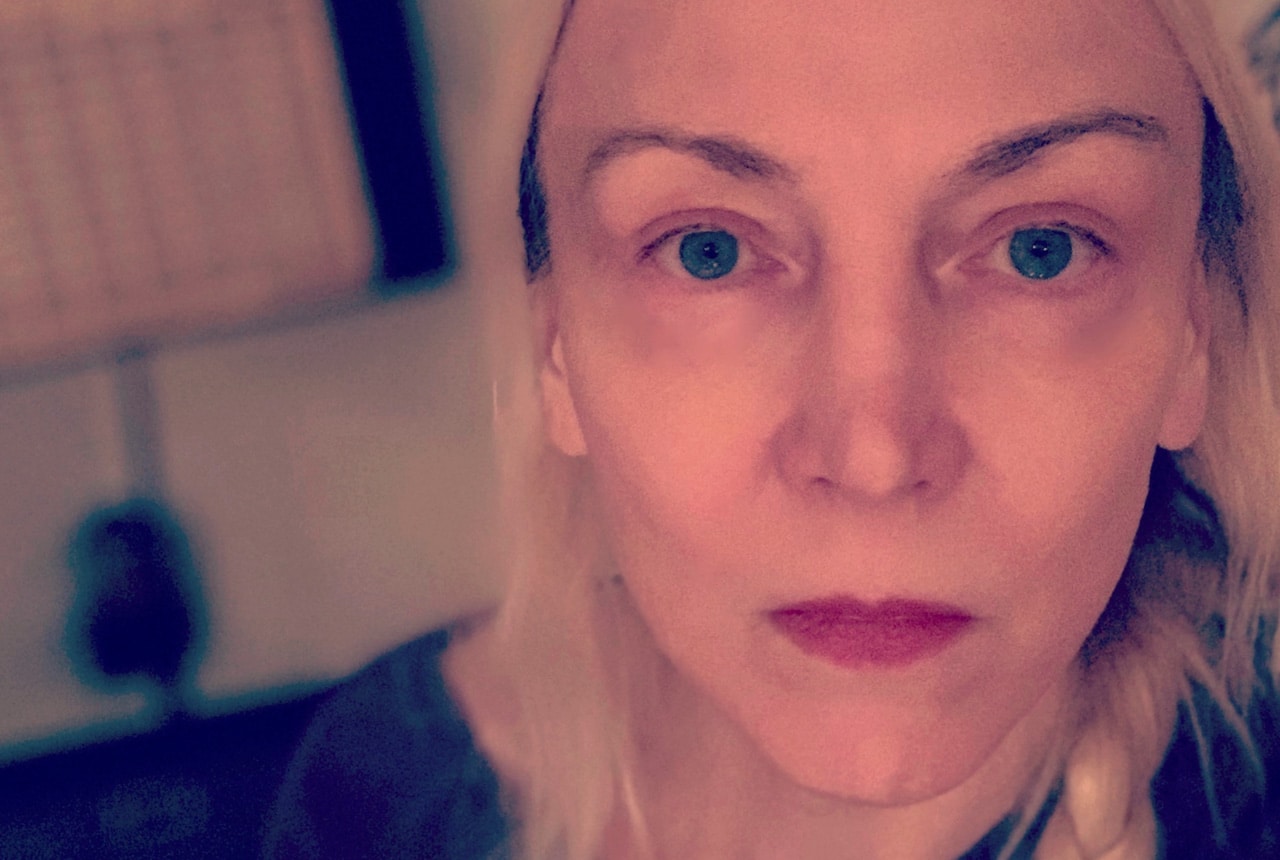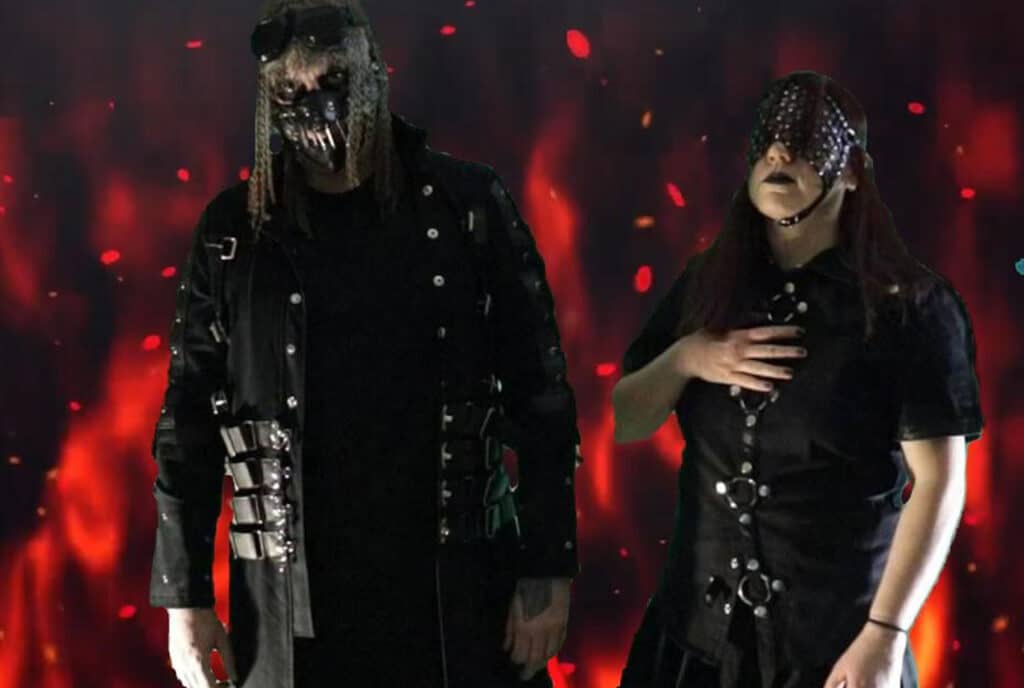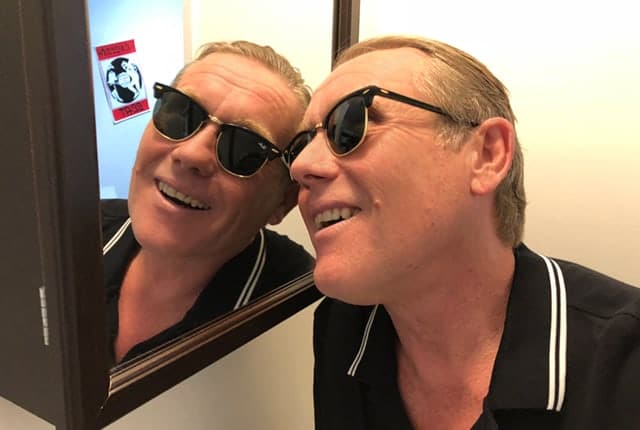Initially released in 1987 under the name Skin (World of Skin in the US), Jarboe’s ‘blood women roses’ was reissued for the first time on Record Store Day (April 23, 2022.) The newly remastered edition is coming out on Belgium label Consouling Sounds and is re-titled ‘skin blood women roses’ to reflect the original project name. Jarboe was a member of Swans at the time of the recording, and Michael Gira produced the album. It established Jarboe as a multifaceted vocalist capable of bringing radically different voices to different songs. In the following interview, Jarboe talks about how the reissue came about, the making of the album, and more.
How did this reissue of ’blood women roses’ come about?
Very simply with the reissue, yet again, of ‘Children of God’ and the World of Skin material not being included. Instead, Michael chose to put ‘Feel Good Now’ on that reissue. So I simply asked what the status was of that material, and he said that I should put out the first album on my own. It’s pretty much cut and dry how it happened. I didn’t want to have the confusion of this name, which we even had to change in the United States from Skin to World of Skin because of other artists using it. So I decided to put it out under my own name.

Had the thought of re-issuing it been on your mind at all over the years?
No, not particularly. I simply see it at this point as historical; it’s an artifact. It’s historical in many, many ways. For me in terms of my continued style of becoming different personas, becoming different characters, as you will, with radically different voices for different songs as I tell a story as a character in that song. That style was established with this album, as well as the eclecticism, which I’ve continued to do with every single album. But also, it’s a reference point to the trajectory of Swans going from the kind of bludgeoning, quasi-industrial, sludge kind of sound that was happening. I moved up there [to NY], and for about a year I did other work helping the band getting press kits made and answering fan mail and this kind of thing, and then going on tour in 84, being a type of roadie carrying stuff and kind of being helpful in every possible way. When I did the first tour, I was never singing. I just played the Ensoniq Mirage. And so I went into the studio and did vocals on ‘Time Is Money,’ ‘Greed,’ [and] ‘Holy Money,’ those were for Some Bizarre. And then when the shift was made to Mute, we had more of a budget to go in and to do this album, ‘blood women roses’ and also to do ‘Children of God’ and other subsequent projects. So that’s basically how the tangible reality that came into fruition happened; there was some investment to make it happen.
Could you discuss some of your memories of making ‘blood women roses’?
Well, I had been playing piano and the organ sounds in the studio that we had in New York, which was actually [on] 6th Street, 93 Avenue B and East 6th Street. I was working on some of this material then, like I came up with the melody for ‘1000 Years,’ and I came up with ‘Red Rose,’ the sounds; I created those sounds. And I had this idea of expressing different moods and different voices. So when I originally wrote ‘1000 Years,’ I had lyrics as well, and then we discussed those lyrics, and he abstracted the lyrics. My lyrics were a bit more literal, perhaps. And so he abstracted the lyrics when I explained to him it was from the point of view of being a vampire. He then came up with the brilliant line, ‘This body is a temple stolen from the Lord; I’ll walk in your shadow for a thousand years.’ So that kind of drove the message home. That was a collaborative effort with him, taking my words and then refining them and then [applying them] to my melody. And so it kept the cohesion for me, and in fact, it enhanced it. So I was very happy with that. But then, you know, we were listening to … he knew about my history with an interest in jazz singers and blues. And so we tackled ‘Cry Me a River’ and ‘The Man I Love.’ I was establishing, I guess I would say, the ability to interpret a song and to make it my own and to shine a different light on it. Because Julie London had a very coy kind of interpretation of it when she initially made a hit out of it. I made it something much more chilling and much more intense. I think the album does a really, really good job of expressing the different voices and the different intonations and nuance[s] that I could bring to the song. Certainly Jack Barron, the British music journalist, when he wrote the review, when the initial reviews came out, he entitled his review ‘Birth of a Singer.’ And this couldn’t have made me happier because that was the deliberate point – to showcase the singing.
You’ve done a new video for ‘Red Rose’ – could you comment on that?
Well, the video is great because I immediately thought about Marilyn Chen, who is a woman that I know who’s a dancer, who’s also a type of gymnast, and she’s rather acrobatic with the things she can do, rather amazing. She has an incredible sense of balance and muscle control and is also quite graceful. And so she was the first person who came to my mind because, in the song, I always saw it in my mind as a dancer who’s spinning, who’s spinning round and round and round. And so, that’s what she does. She’s up in the air, and she’s spinning up in the air. And so it’s really kind of perfect. What she did, to me, is perfect.
In what ways do you feel the album inspired your future work?
This opened the door to ‘Children of God’ with ‘In My Garden’ and ‘Blood and Honey’ and ‘Blackmail’ and then the title track ‘Children of God.’ I became, after this, a person who would appear doing lead vocals and then doing lead vocals on stage. So it kind of opened the door to a lot more input for me in terms of my voice and musical input. So it’s very, very important for that.
You mentioned the Ensoniq Mirage, and your work has always had an experimental edge. Do you feel the evolution of musical technology has impacted your creative process?
Yeah, in my personal view … I’ve done a lot of collaborations, whether it’s with name artists or just talented musicians. Because I don’t really consider that; it’s just what the person brings to the table. And I think, from my point of view, getting away from the dependence of studios and engineers, and I think the ability to control all of it yourself, alone, has been the biggest step. That’s opened the door for so many people because they don’t have to worry about the expense and inconvenience. They can just spontaneously work when they’re in the zone to work. So I would say learning technology and learning the tools to work by myself has been incredibly freeing. And I’ve really enjoyed that process of not being dependent on the studios. The entire time in Swans, that’s all we did was go to these studios. It was a great experience, and I love the memories of working in all those big studios, walking and buying these heavy [tape] reels and carrying them for blocks. That’s one of the things I did, and I much prefer the new way of doing it. That, to me, has been revolutionary. So the tools for me would be the computer and a USB mic and the ability to engineer your work and the ability to manipulate it and do what I would call architecture. That’s the new way. I mean, architecture … you can take anything, and you can manipulate it, and you can create something from it. I did architecture on ‘Illusory,’ which is another album on Consouling Sounds, from 2020. And that’s definitely my favorite thing I’ve ever done. It has a lot to do with the fact that I conceived it in my head, and I brought to fruition exactly what I wanted and worked on it laboriously. And just editing it, editing it, editing it until it was finally something extremely, to me, contemporary and also very emotional. And also it opened the door to something I’m doing now, which is to take something old, since I have such a massive back catalog of material, to take something from the past and then to reinvent it.
So I did that with ‘Man of Hate’ on ‘Illusory’ and I’m going to be doing that again. Probably [on] every album, I’ll be having one thing that’s completely seen in a different way. And that’s because I CAN do it because I have recorded so much material after all these years that it’s fun to go back to revisit something. So the answer would be for sure the tools have been the ability for a recording artist to have the equipment to learn and study and to work on their own.

Some artists complain that this leads to not knowing when to stop working on a song. Do you ever run into that?
I’ve never had that problem because I’ve worked under so many different conditions with so many different people. I think if I have a takeaway from all the years with Swans and working with Michael, I think the takeaway from that is he is … when I worked with him, he was a master of, I guess a type of minimalism, like a type of restraint. And so he would frequently say to me, whether it was singing or playing, ‘That’s too many notes.’ So I learned to kind of refine and to take away rather than add. And that’s an approach that I still have. I like mantra-type songs with repetition; I like things that kind of are transcendent and have a kind of a spiritual element. And this is something that I definitely took away from the years of working with him. The interesting thing is I can apply that to when I hear other artists and hear other music, and I’m always drawn to that approach, even if you go all the way back to the catalog of John Coltrane. I hear his incredible mastery, his sense of restraint. His notes mean something. They’re not just there showing off; they mean something. So I kind of look for deliberation when hearing music from other people.
What do you look for in a collaboration? What do you look to get out of it?
Well, for the learning experience. I mean, not every one is a happy experience. It just depends on what you’re looking for and what [you’re] trying to get out of it. And I think now, for quite some time now, this answer has been ‘Thank you, no’ more than ‘yes.’ And, I believe that if I were giving my opinion to someone and starting out, it would be to say yes to almost everything and to keep saying yes. Because I think there’s input for years and years and years, all of it is input. And then you get to the point where it’s output. The more you input and learn, then you can take those tools and those experiences to your output.
As time goes by, you need less and less input because you kind of become on equal footing with whoever you’re working with. You’re no longer learning or input[ting]. It’s more like you’re looking for equality and for a peer. And you’re looking for the equal respect of each other’s ideas. When you do that, then there’s no disagreement. There’s no battle of ego[s]. That’s the main thing to look for. And I think that I’m grateful for every single experience I’ve ever had because I’ve learned so much.
A big one would be working with Larry Seven on ‘Beautiful People Ltd.’ That was my first experience with working in an apartment and working in an apartment in New York City without [studio] walls that kept the sounds of the city outside of it. So we’d be recording late at night, and then a motorcycle would go by outside, and the motorcycle would be picked up on the vocal mic. And so we would simply leave that in there. It kind of got to the point where you would use the quote ‘mistakes,’ and that completely turns everything around because you realize that it’s all sound. So this was a valuable experience working in a makeshift studio with gear that he got himself from parts from Radio Shack and then having all the sounds going on outside around you.
That’s a very good approach to do too, [to] work in situations that are less than ideal. And then you get to be really flexible. The studio doesn’t have to be sterile; it’s all sound, and it can all be used. I remember Bill Rieflin was a really good friend of mine who passed away. He said someone asked him once about raising and decreasing the volume of drums in a recording. And his response was beautiful. He said, ‘It’s all music. You can do anything you want.’ This was something that I also learned through collaboration was to kind of look at sound as what it is instead of trying to contain and control and think there’s only one way to do something. So that’s what collaboration will do; it will open up the door. There’s a lot more than one way to do something.
Until preparing for this interview, I didn’t realize that you’d done music for a video game, “The Path.” What was that experience like?
It’s not a traditional game. It’s like a work of art. It has a type of a game, but it’s more like an art piece. And these designers … I interviewed these people on my website: Michaël Samyn and Auriea Harvey. Auriea Harvey is someone who had a breathtaking website. This was years and years ago. I think I was just getting my first computer, and I saw this website, and it just blew my mind because it was so artful. And so they are revolutionary designers and artists and working with technology. She’s just so talented. So, I kind of knew them and dialogued with her. And then I interviewed them from my site.
And I think then they came to me because they knew my work, and she knew this particular album. She knew the ‘blood women roses’ album. She’s very familiar with it. So it was kind of a natural thing that we migrated towards working on this project together. She asked me to work on it and then I reached out to my friend Kris [Force] and asked her to work on it because that’s what she does for a living. She creates sounds for games. And now she does virtual reality. She’s a technological whiz. So it was really great to bring her into that. We worked on it together, and then it won the award in Bilbao, Spain, for the best soundtrack of the game awards. It won the international game awards prize for the best music. So it was really fulfilling, and they asked me to work on a couple of other projects, doing a voice for one project, and also Kris went on to do another project with them.
And then, I think it was like about a year ago, I was asked to do a soundtrack for a film short. And so we are finalizing that now. We’ve been working on that together. So that’s another project. We make a good team because I have this artistic kind of slant, and Kris has that as well, but she also has this masterful command, with degrees from Mills College. She’s truly an expert with editing and syncing to parts of the visual. So that’s such a happy combination. But I’ve also done audio just for videos, for video artists. And so there’d be like short videos. I think one was like eight minutes, and one was about six minutes. And so I synced to the one German artist’s video and then [to] the other artist. I had a long ambient piece that just fit perfectly with his video. Those are fun to do. I’ll probably do more of that in the future because people do ask me to work on stuff like that.
I’ve interviewed Marco Porsia, director of the Swans documentary “Where Does a Body End?” and he said that you played a big role, especially in providing archival footage. What are your thoughts on the film and how it turned out?
Well, we’ve known each other for many, many years. I knew him when he was still living in Italy, and he would come and he would film. Like I think it was the ‘Love of Life’ tour. He came and filmed. And so we were corresponding with each other because you gotta remember, I answered for years. That was my job. I answered all the fan letters. I answered all the mail, and most of it, you know, came in [the] physical mail because we didn’t have a computer, and it wasn’t email. So I answered; it was back and forth. So we knew each other from that. And then he moved to Toronto, and we continued to stay in touch once in a while. And so when he decided he was going do this, I immediately started thinking about all the eras. I mean, not just the constant change in lineup, but the different radical eras of sound. Like, to go from, you know, ‘Filth’ or ‘Cop’ to ‘The Burning World.’ So to me, I said, well, you’re going to have to do like seven different DVDs. It’s going [be] extremely detailed. How can you possibly do this in one film? I think that because there’s a budget to consider and the expense of something like that, he did a good job with what he had.
And then, it still went over budget because it’s very expensive to do what he did. He traveled all around at his own expense. I would say that there’s one that’s a two-disc extended version, and I think that’s probably the best one. But you know, he still wasn’t able to use all of his footage because he has so much. So it would be great if the additional footage could come out again as a separate release. I think that as an introduction to aspects of that project, you know, it’s a good artifact for that. When he asked me about my involvement in it, the stuff I had, I think I immediately said in terms of my own involvement, all I cared about was to show footage of ‘I Crawled’ from the ’97 tour. Because I think that was a seminal highlight for me in that entire experience.
Is there anything that you’d like to add? Are there plans that you’d like to mention?
Yeah, I’m in the process of working on a new album, of course, and I’m finishing up a soundtrack with Kris, for a film involving a man on a motorcycle. I’m also getting ready to talk about touring. I mean, anything can happen right now with touring with the virus. Right now there is a tour that is supposed to start on the 1st of November and carry on into December, and that’s all going to be in Europe. It’s a co-headline tour with Jozef van Wissem. I’m a big fan of his. And so that’s going to be a very exciting tour. I sang with him on a song on one of his more recent albums and, of course, he won the award for the soundtrack for “Only Lovers Left Alive,’ which is an incredible film. So it’s going to be really cool to tour with him; he’s a wonderful loop player. He works with loops and is extremely amazing. So let’s hope it happens.
For more info on Jarboe, visit thelivingjarboe.com.










